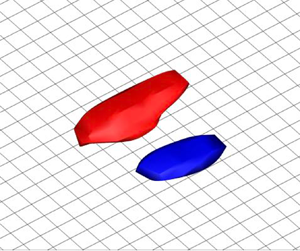Published online by Cambridge University Press: 22 August 2023

Near-wall turbulence structures and generation in the wall-modelled large-eddy simulation (WMLES) are revealed. To elucidate the turbulence structures driving a near-wall turbulence generation in the WMLES, flat-plate turbulent boundary-layer flows calculated by the WMLES and direct numerical simulation (DNS) are closely investigated. A conditional-averaging technique is applied to the instantaneous flow fields and the near-wall statistical structures of the ejection and sweep pairs, which produce the turbulence, are revealed to exist even in the WMLES although the structures are non-physically elongated compared with those obtained by the DNS. Since the near-wall turbulence structures in the WMLES are revealed not to be disordered, but to be coherent structures with low- and high-speed fluids alternating in the spanwise direction, it is suggested that the near-wall turbulence generation in the WMLES is explained by the numerically elongated coherent structures. Furthermore, the Reynolds number effects of wall-bounded turbulent flows, i.e. the appearance of the outer peak in the energy spectrum of the streamwise velocity fluctuations at increasing Reynolds numbers, is found not to be reproduced by the WMLES, and the origin of the outer peak is discussed in association with the inner–outer-layer interactions. The near-wall turbulence structures in the WMLES could depend heavily on the computational grids and the numerical methods. Therefore, additional cases varying the grid resolutions and the numerical methods (numerical schemes and sub-grid-scale models) are also conducted to confirm the consistency of the present conclusions.